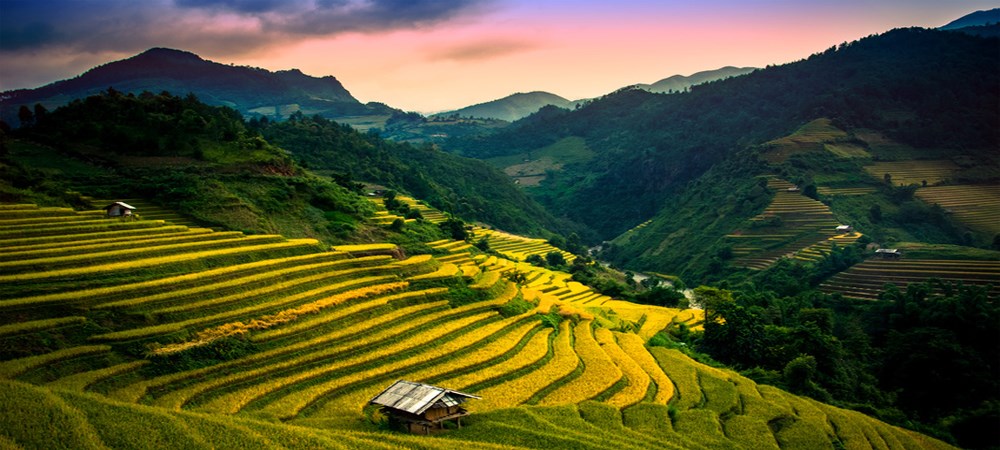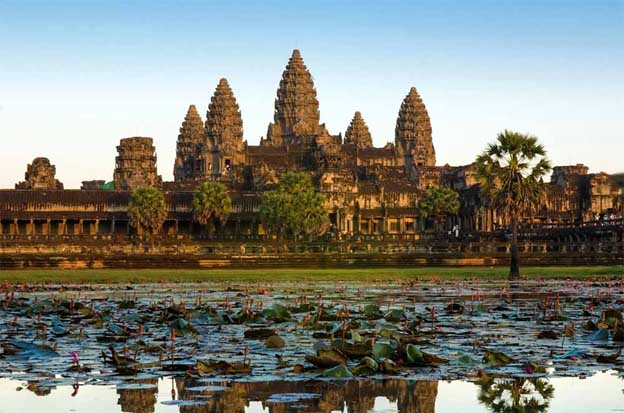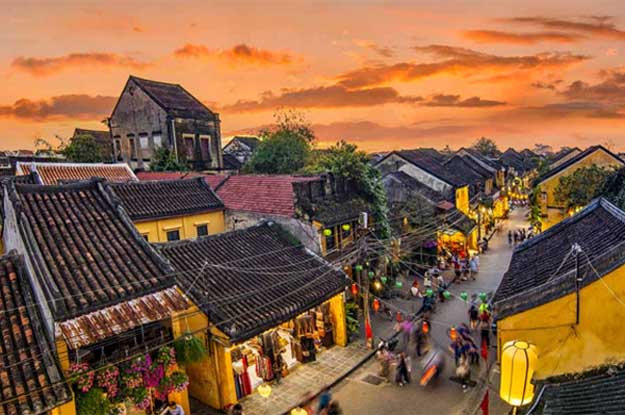Since 1978, UNESCO has chosen over a thousand natural and cultural attractions as World Heritage Sites. This designation indicates that an area or landmark has cultural or historical value. Unsurprisingly, a lot of natural sites from Asia have made it to the list. In 2021 alone, the Korean Tidal Flats and the Kaeng Krachan forest in Thailand were two notable inclusions.
In our previous post we mentioned that Thailand is filled with beautiful beaches, especially on the islands of Koh Lanta, which is a huge draw for those who want to unwind by the water. But with the Kaeng Krachan forest named a UNESCO Heritage Site, you certainly need to include it on your next trip to Thailand. Of course, if you’re planning a luxury Southeast Asian trip around UNESCO Heritage Sites, the Land of Smiles isn’t the only country that should be on your radar. Here are a few you’ll want to visit:
1. Jatiluwih Rice Terraces (Indonesia)
Source: Wikimedia
Credit: Thomas Fuhrmann under CC BY-SA 4.0 License.
Jatiluwih Rice Terraces, located in the west of Bali, is spread across a sprawling 600 acres of land. With Mount Batu in sight, the landscape is made scenic by low hanging clouds. Jatiluwih Rice Terraces is deemed as a UNESCO site for its traditional water irrigation system called “Subak,” which has been maintained since the ninth century.
If you’re into hiking, you can experience the UNESCO site through rice field trekking. You can get to Jatiluwih Rice Terraces by hiring a private cab from Ubud, Seminyak, or Kuta. Of course, if you’re taking one of our luxury trips to Bali, Jatiluwih is featured in just about every tour. If eating’s your first priority upon arriving, there’s the Gong Jatiluwih Restaurant, which offers mostly vegetarian-friendly fares like Nasi Goreng (fried rice) and Gado Gado (Indonesian salad). When you’re ready for your trek, there are five unique trails to choose from. The red route is the most beginner-friendly at 1.5 kilometers. Meanwhile, the white route, which allows you to combine hiking and biking, is 5.5 kilometers.
Around the Jatiluwih area are several small waterfalls that are easy to add in your trip! The Yeh Hoo Waterfall is known for its five-meter cascade surrounded by stunning jungle sceneries. Though you do have to walk through steep stairs to get there, it’ll only take about 15 minutes. If you want to unwind, there’s also the Angseri Hot Spring. Its warmed water contains a lot of strong minerals which are good for your body. By paying a small entry charge, you can enjoy the hot spring pool nestled among the tropical timberlands.
2. Angkor Wat (Cambodia)
Angkor contains numerous temples from the Khmer Empire’s different capitals, which dates back to the ninth to 15th century. Among the impressive monuments on the site is Angkor Wat. In a BBC 4 podcast on Angkor Wat by Melvyn-Bragg, it is described how Suryavarman II, a Khmer king from 1113 AD to 1145 AD, built the great Cambodian temple in the early 12th century. Today, the site is inhabited by multiple villages, most of whom have ancestors that date back to the Angkor period.
The most convenient and budget-friendly way to navigate through Angkor Wat is by hiring a tuk-tuk. However, the more active and adventurous can rent a bicycle, e-bike, or motorbike to get around the area. For those who enjoy white-glove service, Explorient offers a variety of tours that feature Siem Reap and Angkor. Once your tour’s done, head downtown for a delicious meal at Wat Damnak Kitchen. The restaurant serves up Khmer cuisine with a French twist with offerings like croaker fish in a spicy curry of wild sour leaves, green jackfruit, and winged beans.
After, head on over to Siem Reap Brewpub for an energy-boosting afternoon ale. If you’re into live music, then a visit to Miss Wong, a speakeasy near Pub street, is a must to cap off your night. Otherwise, art lovers can head to Eleven Gallery to view contemporary art from up-and-coming local and international artists.
3. Melaka and George Town (Malaysia)
Photo Credit / Source: Pexels
Melaka and George Town are historic cities of the Straits of Malacca that showcase the development of maritime urban settlements. The churches, residential buildings, and squares in both UNESCO sites have undergone changes from diverse ethnic groups like Malay, Indian, and Dutch cultures. Currently, media technology’s being applied to structures like the A Famosa in Melaka to preserve their cultural heritage.
Today, these cities are a haven for history aficionados and gastronomes. In Melaka, those who love traveling by water will enjoy the Melaka River Cruise, which takes you through Morten Village, Red Square building, and Samudera Museum. If you’re not afraid of heights, then include the Taming Sari Tower in your itinerary where you can admire a 360-degree bird’s eye view of the historical city. Now, as a sweet treat after all that sightseeing, stop by Cendol Kampung Hulu to enjoy cendol (iced sweet dessert) topped with mango cubes, dragon fruit, or coconut cream. Otherwise, you can check The Daily Fix Cafe for their famous pandan pancakes!
Now that you’ve gotten to know Melaka’s offerings, you can head over to the beautiful sights (and equally tempting cuisine) at George Town. The area’s abundant with museums, including the Penang State Museum—which can teach you more about the town’s rich history—and the Colonial Penang Museum that’s full of astounding antiques from the 18th to 20th centuries. After an afternoon of immersing yourself in the town’s culture, unwind with some authentic Peranakan food at Nyonya Delights Homestyle Cooked Food. Their chicken rendang and rice dumplings will make you feel at home by the time the meal is over. Be sure to check out our suite of private Malaysia tours suitable for just about anyone and for any occasion.
Hoi An (Vietnam)
Hoi An Ancient Town is located in Vietnam’s Quang Nam Province, just 30 kilometers to the south of Da Nang city. It’s a reflection of indigenous and foreign influences (mainly Chinese, Japanese, and later, European). Presently, it contains well-preserved commercial and domestic buildings, an open market, and a ferry quay—all of which capture its original oriental style.
Generally, tourists can freely roam the town without entrance fees. One spectacular sight you won’t want to miss is the Hoai River, especially when colorful lanterns are released at night. However, you can also purchase tickets to cultural monuments like the Church of the Tran family, Phung Hung ancient house, and Quan Cong Temple. If you’re the type who likes learning new things, then ancient weaving and calligraphy classes are available through the Hoi An Handicraft Workshop (which is at Nguyen Thai Hoc street).
After an exciting day of crafts, top off your activities with a warm bowl of Cao Lao (brown rice noodles). The one at Cam Ga Huong, which is located off Le Loi Street, is cooked with lye water and has a generous amount of pork and rice crackers. If you find yourself wanting to learn more about how Vietnamese food is made, then enroll in a short class at the Gioan Restaurant and Cooking School. A bonus is that you get to explore the local market scene, all before preparing Pho noodles and banh xeo (a Vietnamese pancake) as a well-deserved feast to celebrate your trip! Because Hoi An is such as fascinating destination, it is featured in just about every Explorient Vietnam tour from honeymoon trips to family holidays to ultra-luxury vacations.
Specially written for EXPLORIENT.com
By: Relena Jamie







